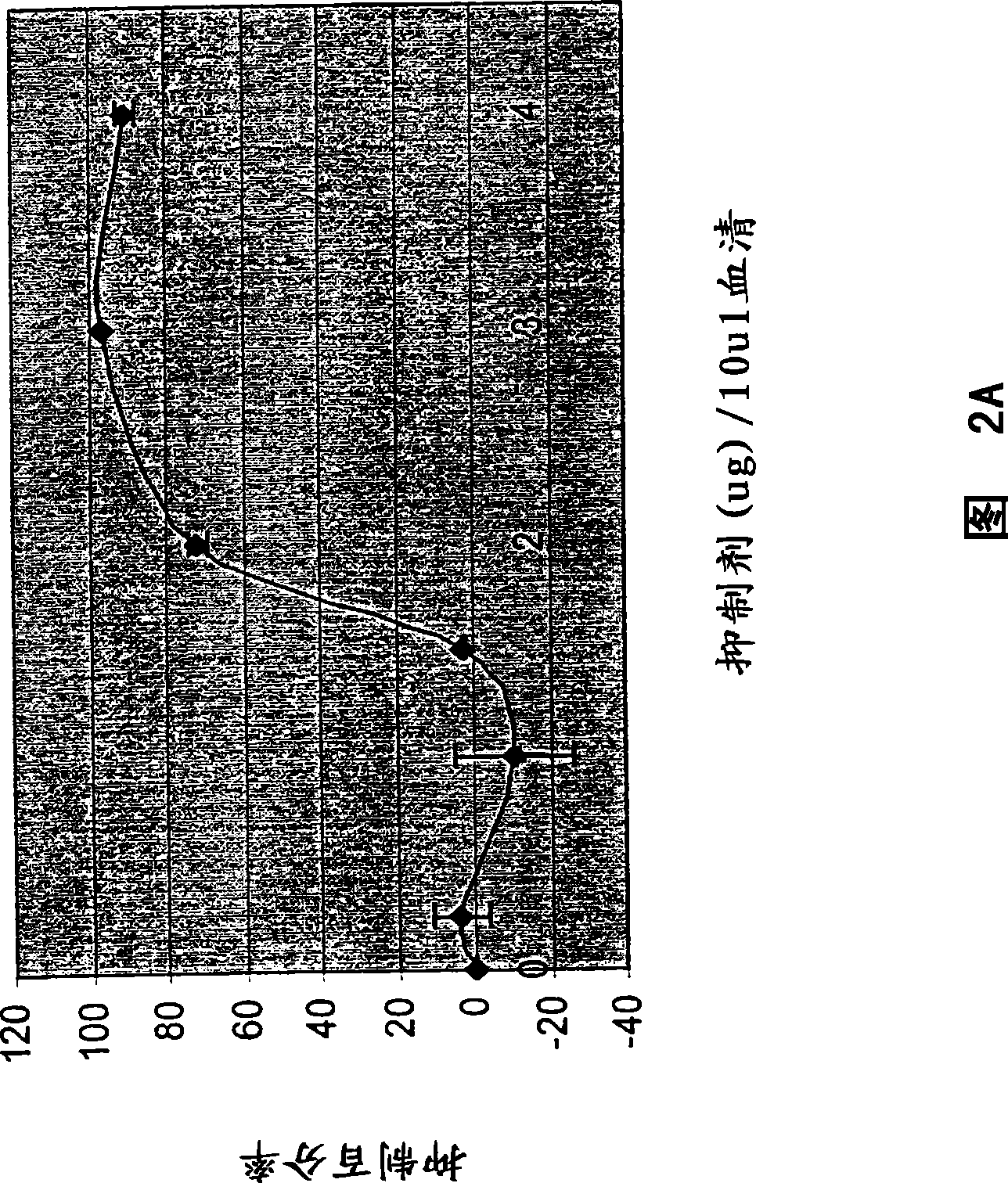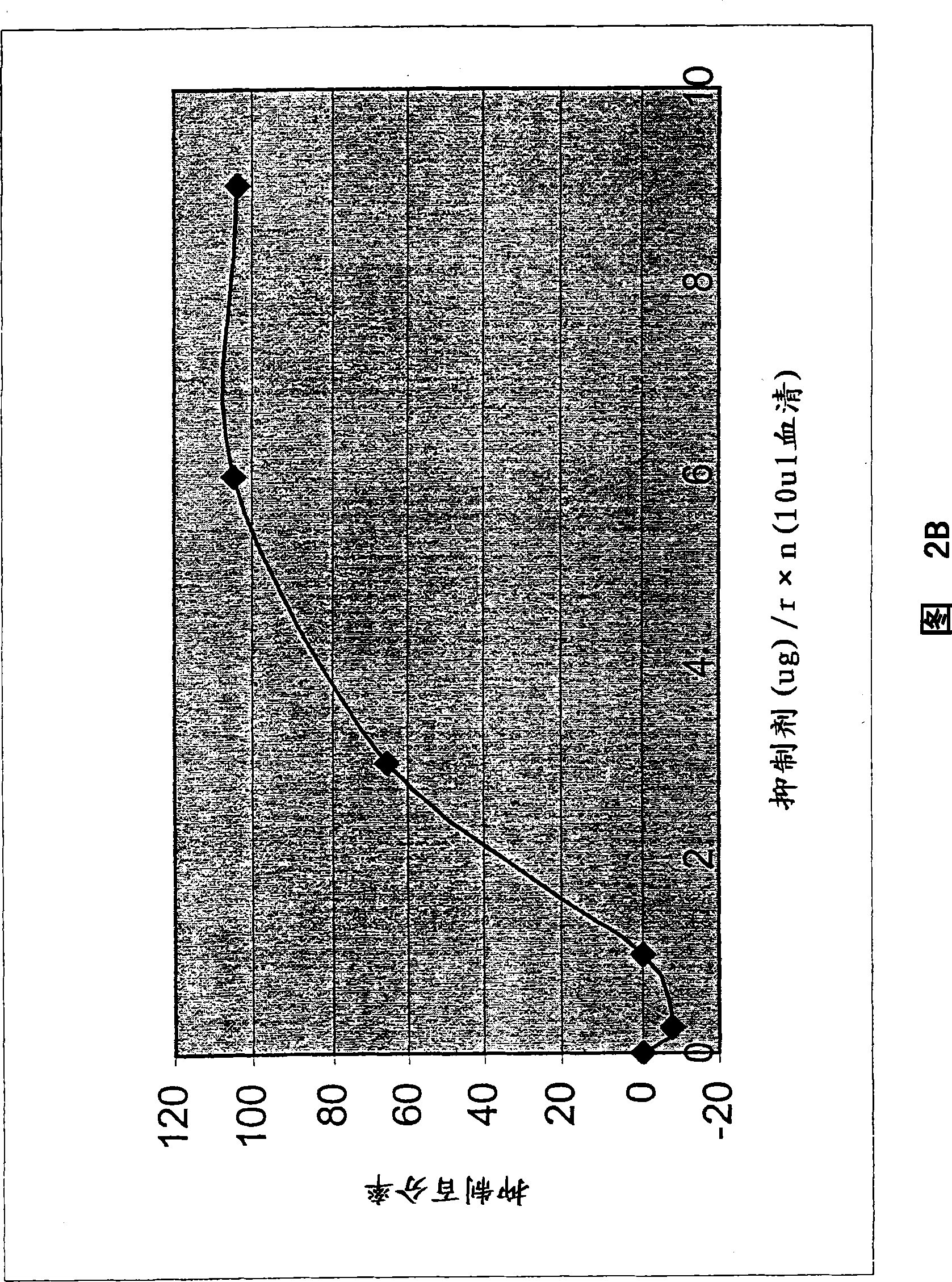Inhibition of factor B, the alternative complement pathway and methods related thereto
A technology of factor B and antibody, applied in the field of new anti-factor B antibody, can solve the problems of improving susceptibility, limitation of clinical use of lung diseases related to airway hyperresponsiveness, etc.
- Summary
- Abstract
- Description
- Claims
- Application Information
AI Technical Summary
Problems solved by technology
Method used
Image
Examples
Embodiment 1
[0146] The following examples describe the production of novel inhibitors of the complement pathway.
[0147] The present inventors have generated several hybridoma cells that produce mouse monoclonal antibodies that bind mouse factor B. In the present study, the inventors set out to identify the ability of one of these antibodies to inhibit the complement pathway. The inventors also tested this antibody in an antiphospholipid-mediated fetal loss model. As previously described (Girardi), factor B deficient mice are protected from fetal loss in this model, and the inventors hypothesized that exogenous inhibitors of the alternative pathway would be effective therapeutic agents in this disease model.
[0148] method
[0149] Construction of factor B-Ig fusion protein and purification of mouse factor B. A plasmid encoding two short homologous repeats (SCRs) of the Factor B gene linking the hinge, CH2, and CH3 regions of the mouse IgG1 isotype was constructed ( figure 1 ). The...
Embodiment 2
[0185] The following examples demonstrate that complement activation via the alternative pathway is critical in the development of airway hyperresponsiveness and inflammation, and further demonstrate that inhibition of alternative pathway complement activation suppresses airway hyperresponsiveness.
[0186] Given the effectiveness of inhibiting complement activation prior to allergen exposure, the inventors also examined complement activation pathways. In the present study the inventors report that activation of the complement cascade via the alternative pathway is critical in the development of airway hyperresponsiveness and airway inflammation.
[0187] method
[0188] animal
[0189] Eight to 12 week old female C57BL / 6 mice were obtained from Jackson Laboratories (Bar Harbor, ME). As previously described, mice heterozygous deletion of factor B (fB+ / -) were first crossed with the C57BL / 6 strain, then recrossed at the F1 generation, and then recrossed to form the fB- / - st...
Embodiment 3
[0282] The following examples describe additional binding data for a series of anti-Factor B antibodies produced by the inventors. Assays were used to examine binding and / or inhibition of mouse Factor B and human Factor B by various antibodies. As seen, mAB 1379 binds and inhibits mouse and human factor B. In contrast, a mAb called 624 was able to bind mouse and human factor B, but failed to inhibit the human alternative pathway. A competition ELISA was used to further evaluate the antibodies. As seen, antibodies 624, 691 and 1231 did not block 1379 binding. These antibodies must therefore bind the protein at a different site, which explains why they bind factor B in vitro without inhibiting its function. However, antibodies 395, 1322 and 1060 are competitive inhibitors of 1379.
[0283] Table 4
[0284]
PUM
 Login to View More
Login to View More Abstract
Description
Claims
Application Information
 Login to View More
Login to View More - R&D
- Intellectual Property
- Life Sciences
- Materials
- Tech Scout
- Unparalleled Data Quality
- Higher Quality Content
- 60% Fewer Hallucinations
Browse by: Latest US Patents, China's latest patents, Technical Efficacy Thesaurus, Application Domain, Technology Topic, Popular Technical Reports.
© 2025 PatSnap. All rights reserved.Legal|Privacy policy|Modern Slavery Act Transparency Statement|Sitemap|About US| Contact US: help@patsnap.com



